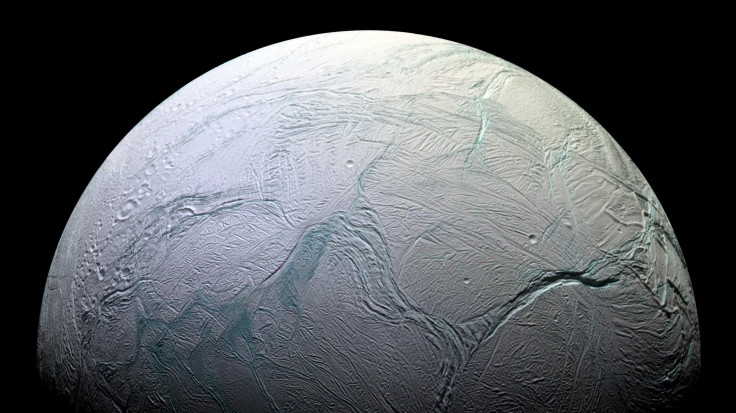Enceladus: Saturn’s Moon Spews Out Complex Organic Material, Study Confirms

A group of researchers studying data from Cassini, the spacecraft that orbited Saturn for 18 long years, has found the ringed planet’s sixth largest moon, Enceladus, spews out complex carbon-rich organic molecules.
While organic molecules can be produced by non-biological processes and do not necessarily indicate the presence of life, the emission noted on Enceladus makes it the only place after Earth to have all basic conditions required to support life at the same time — a fact that bolsters the possibility of finding microbes on the distant object.
“Previously we'd only identified the simplest organic molecules containing a few carbon atoms, but even that was very intriguing," Christopher Glein, one of the researchers behind the latest discovery, said in a statement. "Now we've found organic molecules with masses above 200 atomic mass units. That's over ten times heavier than methane.”
The revolutionary discovery was made after researchers from Southwest Research Institute combined data collected by two different instruments on Cassini – Cosmic Dust Analyzer and Ion and Neutral Mass Spectrometer on the spacecraft (INMS).
Back in 2015, Cassini flew through a plume of material emanating out of the cracks in Enceladus’ surface. The spacecraft, which later plunged into Saturn’s atmosphere to end its mission, sampled the material, while its instruments detected the presence of molecular hydrogen in it.
This, combined with the previous discovery of a global subsurface ocean, indicated hydrogen in the plume was a result of the interaction between the warm underground water and the moon’s rocky core.
"Hydrogen provides a source of chemical energy supporting microbes that live in the Earth's oceans near hydrothermal vents," Hunter Waite, INMS principal investigator and another author of the study, said in the statement. "Once you have identified a potential food source for microbes, the next question to ask is 'what is the nature of the complex organics in the ocean?'"
This is exactly where the large, carbon-rich organic molecules — detected from both instruments — come in. According to the researchers involved in the project, the discovery of this material is the first step in delving into the complexity of organics in the ocean.
“A future spacecraft could fly through the plume of Enceladus, and analyze those complex organic molecules using a high-resolution mass spectrometer to help us determine how they were made,” Glein added in the statement. “We must be cautious, but it is exciting to ponder that this finding indicates that the biological synthesis of organic molecules on Enceladus is possible."
The Cassini-Huygens mission was a joint project between NASA, the European Space Agency and the Italian Space Agency. The spacecraft took off in 1997 and orbited Saturn from 2004 to September 2017.
The study, titled “Macromolecular organic compounds from the depths of Enceladus,” was published June 28 in the journal Nature.
© Copyright IBTimes 2024. All rights reserved.





















